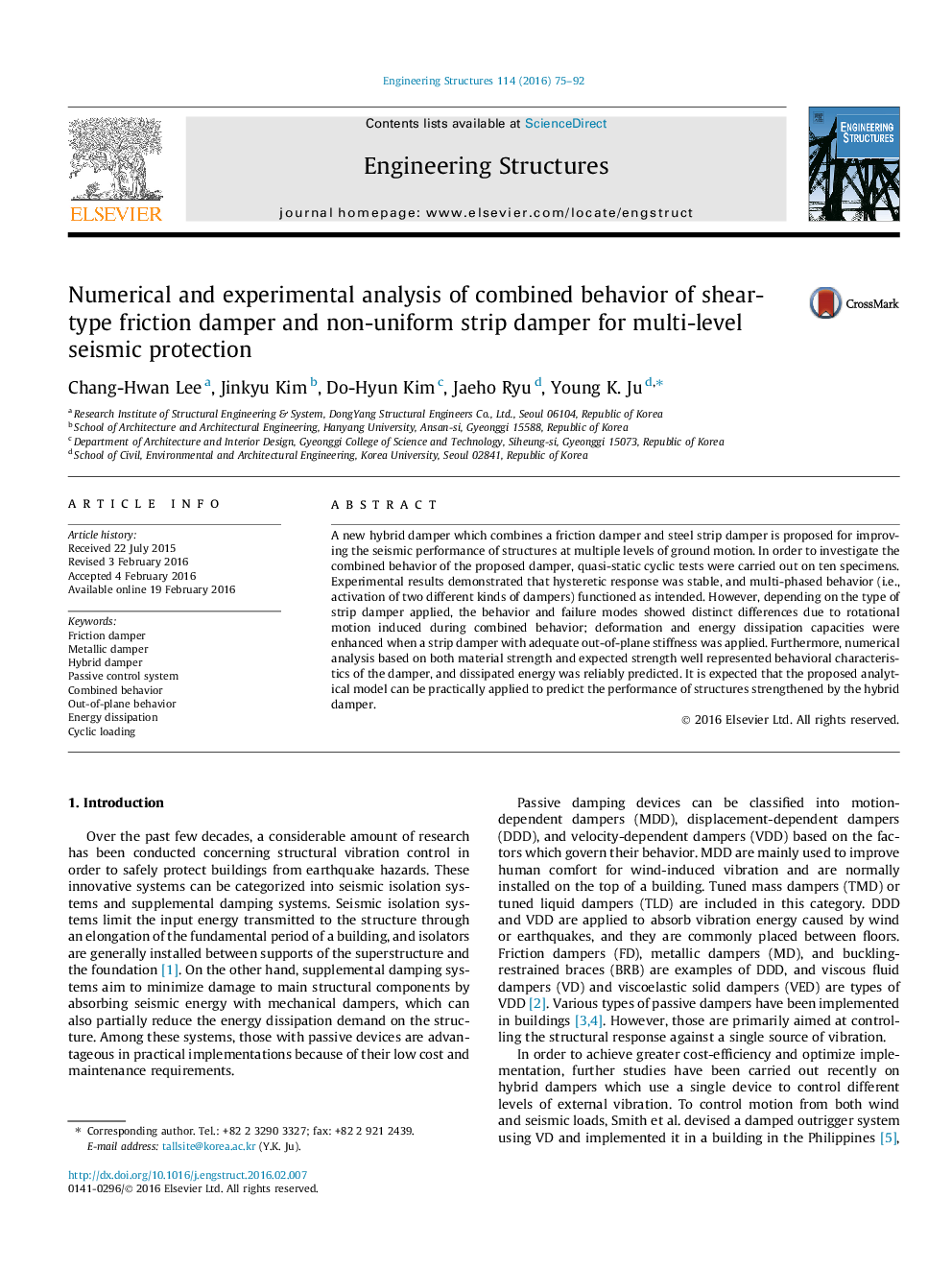| Article ID | Journal | Published Year | Pages | File Type |
|---|---|---|---|---|
| 265811 | Engineering Structures | 2016 | 18 Pages |
•A new hybrid damper comprised of a friction damper and strip damper was proposed.•Combined behavior for multi-level seismic protection functioned as intended.•The behavioral characteristics were distinctly different due to rotational motion.•The out-of-plane performance of strips was found to be the key factor in combined behavior.•The analytical model reliably predicted the actual behavior of the hybrid damper.
A new hybrid damper which combines a friction damper and steel strip damper is proposed for improving the seismic performance of structures at multiple levels of ground motion. In order to investigate the combined behavior of the proposed damper, quasi-static cyclic tests were carried out on ten specimens. Experimental results demonstrated that hysteretic response was stable, and multi-phased behavior (i.e., activation of two different kinds of dampers) functioned as intended. However, depending on the type of strip damper applied, the behavior and failure modes showed distinct differences due to rotational motion induced during combined behavior; deformation and energy dissipation capacities were enhanced when a strip damper with adequate out-of-plane stiffness was applied. Furthermore, numerical analysis based on both material strength and expected strength well represented behavioral characteristics of the damper, and dissipated energy was reliably predicted. It is expected that the proposed analytical model can be practically applied to predict the performance of structures strengthened by the hybrid damper.
